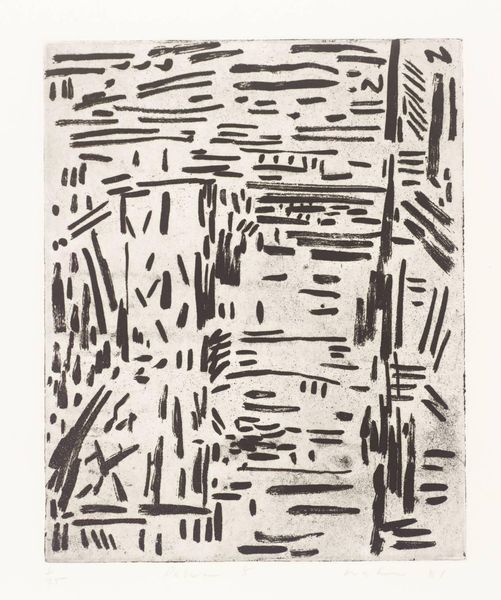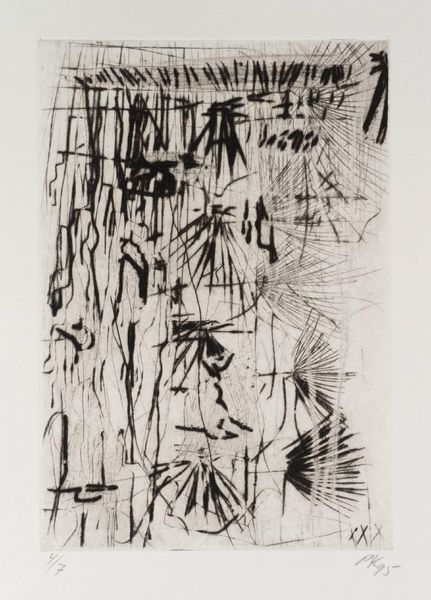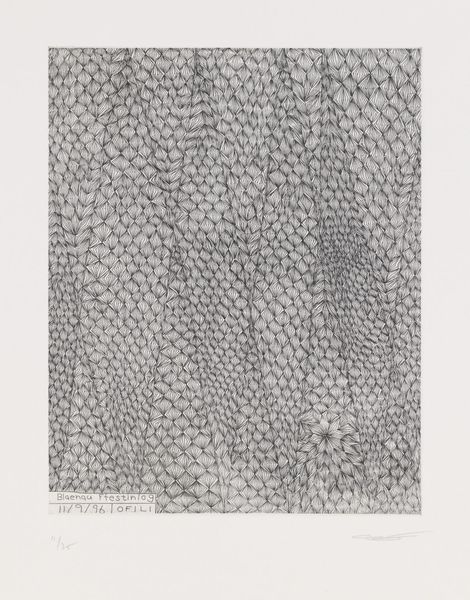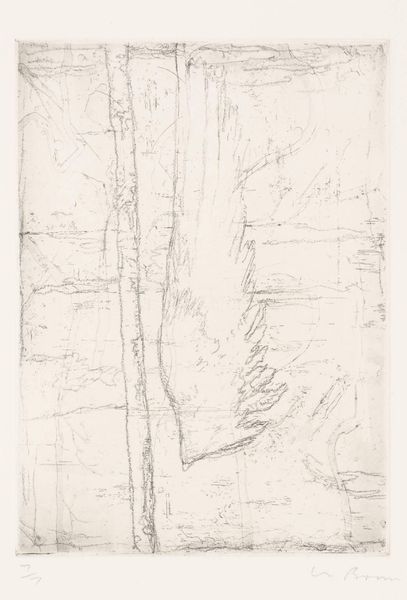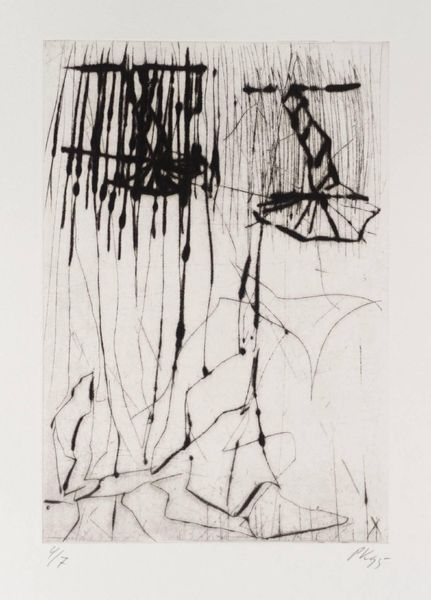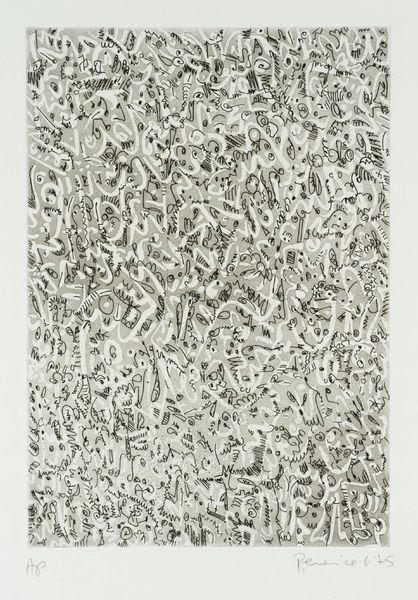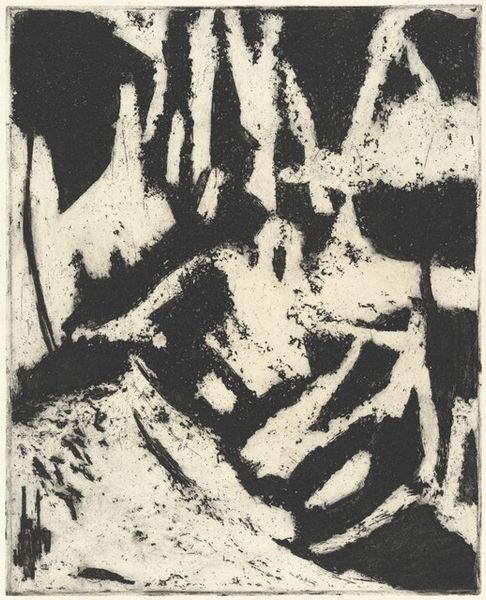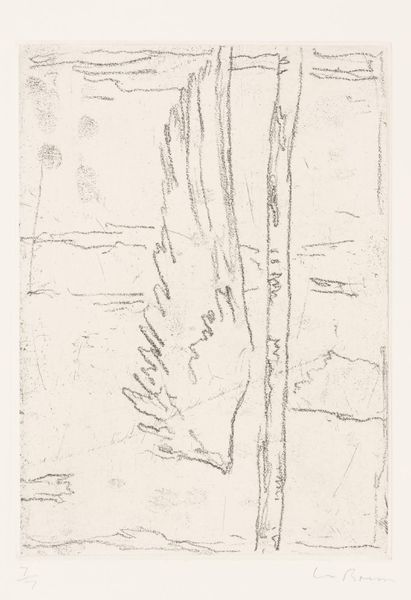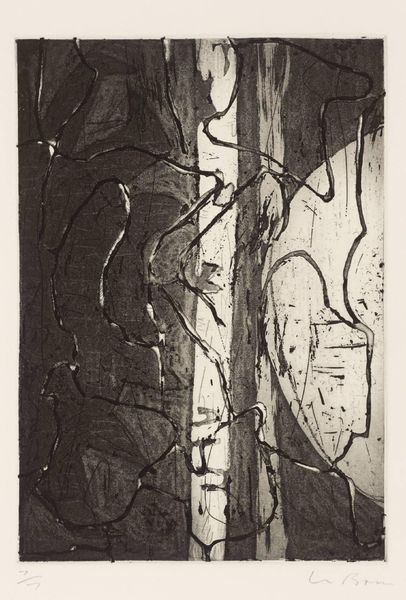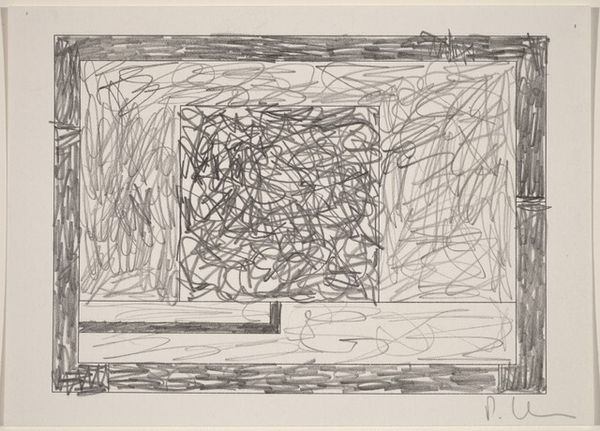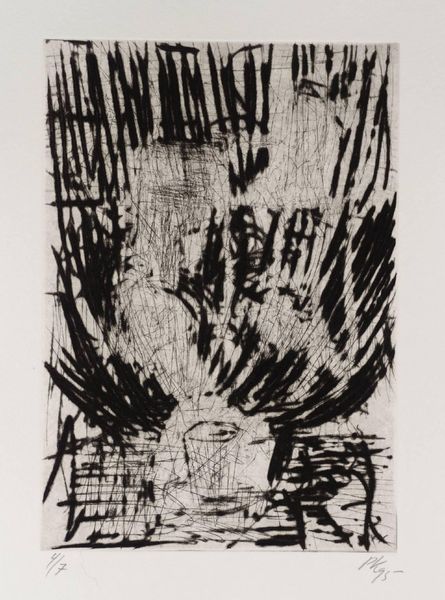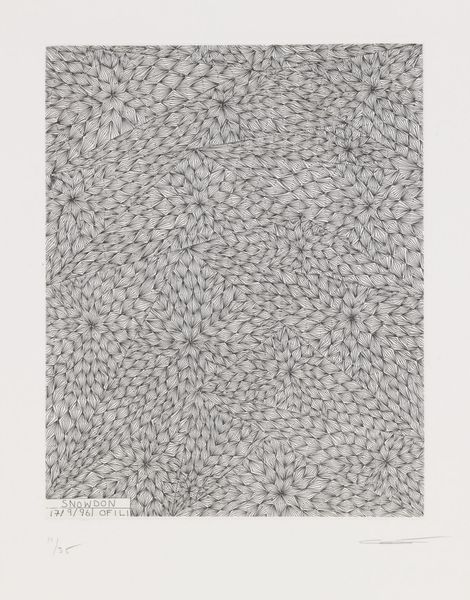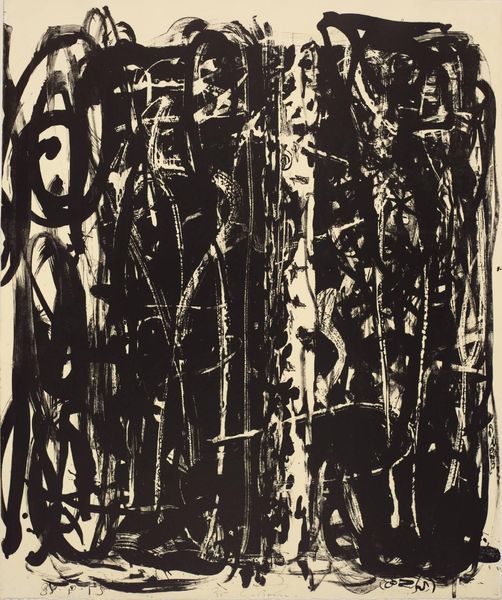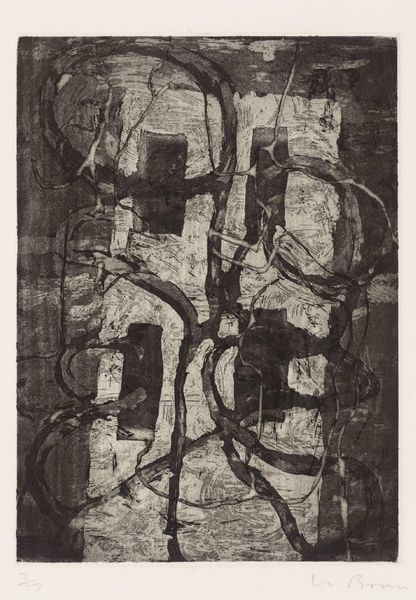
drawing, print, graphite
#
drawing
#
cubism
# print
#
organic pattern
#
geometric
#
abstraction
#
graphite
#
cityscape
#
modernism
Dimensions: image: 35.5 x 19.2 cm (14 x 7 9/16 in.) sheet: 40.8 x 28.7 cm (16 1/16 x 11 5/16 in.)
Copyright: National Gallery of Art: CC0 1.0
Editor: We’re looking at Abraham Walkowitz’s "Abstract City" from 1927, a print in graphite. The severe geometry, like jagged crystal formations, gives me a sense of towering, impersonal architecture. What do you see in this piece? Curator: The formal composition is immediately striking. Consider the radical simplification of form, the reduction of the cityscape to a series of intersecting lines and planes. Note how the artist has suppressed detail in favor of a more elemental representation of urban space. Editor: So you’re focusing on the…structure itself. What does that accomplish, do you think? Curator: Precisely. By emphasizing the underlying structure, Walkowitz invites us to contemplate the abstract qualities of the urban environment. The work’s essence is conveyed through line, form, and tonal contrast. We could deconstruct the semiotic function of each repeated shape. Does it suggest skyscrapers? Societal hierarchy? Editor: I hadn't thought about it that way, but I see how those shapes can take on different meanings. Curator: Also, reflect on the implications of his chosen medium, graphite. Does the grey scale palette reinforce the feeling you identified earlier, that "impersonal architecture"? Editor: Definitely. The starkness contributes to the overall mood. It moves away from the sensory overload I associate with city life, making it more about pure form. Curator: And through those forms, Walkowitz constructs a powerful visual statement on modern life and its impact on the human spirit. The beauty in abstraction resides in its conceptual underpinning. Editor: It’s interesting how removing detail can actually add so much meaning. I'll remember to look closely at those visual components in future works, especially with abstract pieces. Curator: Indeed. Formal analysis gives us the tools to unlock latent meaning in diverse works.
Comments
No comments
Be the first to comment and join the conversation on the ultimate creative platform.
